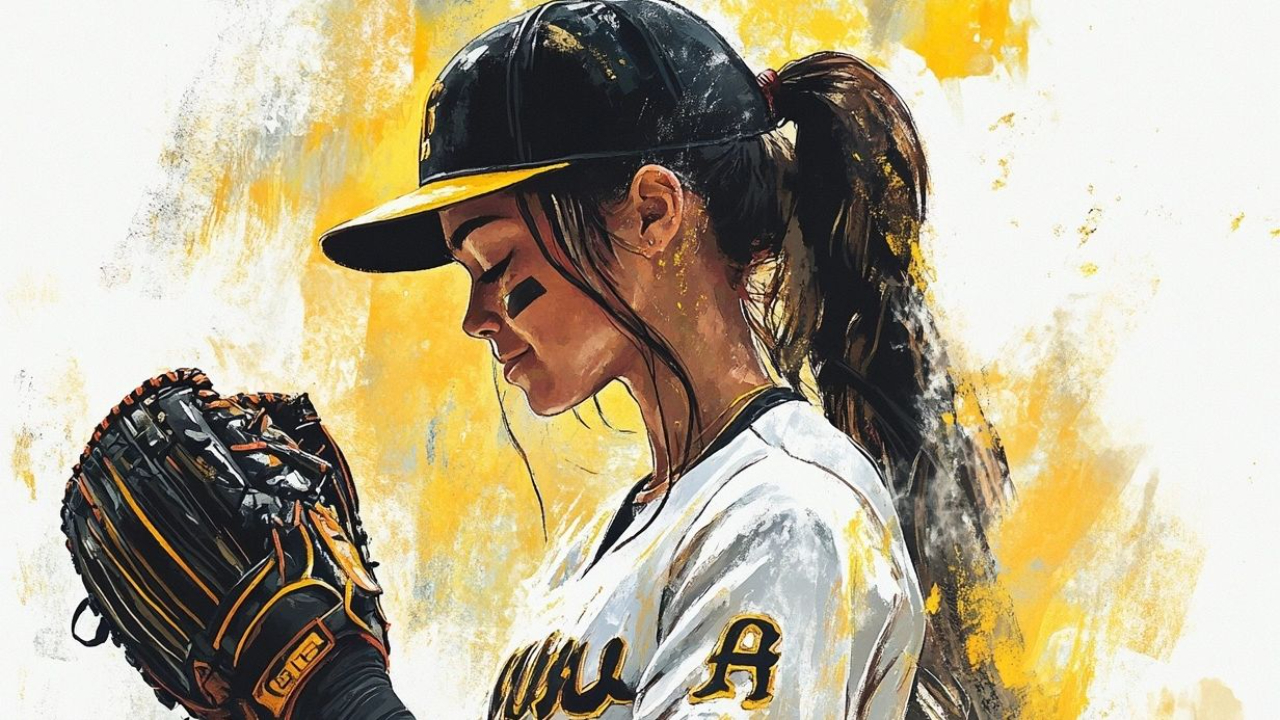The Paradox of Performance: How Trying Less Can Make You a Better Hitter
Mar 23, 2025
The Paradox of Performance: How Trying Less Can Make You a Better Hitter
Have you ever noticed that the harder you try to get a hit, the more elusive success becomes? Or that your best at-bats often come when you're relaxed and "not thinking too much"? This phenomenon isn't just in your head—it's a well-documented psychological principle called the Law of Reverse Effect, and understanding it could transform your approach to hitting.
What Is the Law of Reverse Effect?
The Law of Reverse Effect (sometimes called Humphrey's Law or the Law of Reversed Effort) states that the more consciously we try to perform an action that should be automatic, the more likely we are to fail. In simpler terms: overthinking kills performance.
This principle is particularly relevant in baseball and softball hitting, where you have milliseconds to react to a 70-90 mph pitch. There simply isn't time for conscious thought to direct your movements.
The Science Behind the Struggle
Our brains have two primary systems for movement control:
- The explicit system (conscious, deliberate, step-by-step)
- The implicit system (unconscious, automatic, fluid)
When you first learned to hit, you relied heavily on the explicit system. Your coach taught you about stance, grip, weight shift, and follow-through. You consciously practiced these components until they became ingrained.
But high-level performance requires these movements to transition to the implicit system. When you step into the batter's box during a game, your conscious mind should be relatively quiet, allowing your trained instincts to take over.
The problem? Under pressure, we tend to revert to explicit control. We start thinking about mechanics, consequences, and outcomes—all of which interfere with the automatic processes that produce our best swings.
Signs You're Caught in the Reverse Effect Trap
You might be experiencing the Law of Reverse Effect if:
- You perform better in practice than in games
- You've had the experience of "trying too hard" and performing worse
- Your slumps tend to get worse the more you try to fix them
- You think about multiple mechanical cues while in the batter's box
- You feel "stuck in your head" during at-bats
Sound familiar? You're not alone. Even elite hitters struggle with this paradox.
How Great Hitters Overcome the Reverse Effect
Ted Williams, arguably the greatest hitter of all time, famously said: "Hitting is fifty percent above the shoulders." But what did he mean?
Not overthinking. Not mechanical complexity. Williams meant having a clear approach, trusting your training, and allowing your body to do what it knows how to do.
Consider these approaches from some of baseball's best hitters:
- Tony Gwynn focused on seeing the ball as early as possible and making his decision to swing or not quickly, without second-guessing.
- Miguel Cabrera reduces pressure situations to "See ball, hit ball. That's it."
- Mike Trout uses a consistent pre-bat routine to clear his mind and shift into performance mode.
What these approaches share is a commitment to simplicity and trust in training—the antidotes to overthinking.
Five Strategies to Apply the Law of Reverse Effect
1. Develop a Consistent Pre-Bat Routine
A pre-bat routine serves as a trigger that shifts your brain from conscious planning to unconscious performance. Like a batter stepping out between pitches to reset, your routine should clear your mind and prepare your body.
A good routine:
- Remains consistent regardless of the situation
- Includes both physical and mental components
- Ends with a clear focusing cue
- Takes no more than 10-15 seconds
Example: Deep breath → Practice swing with one clear feel cue → Step into box → Focus eyes on pitcher's release point → Simple trigger thought ("see it")
2. Shift from Outcome to Process Focus
When you fixate on results ("I need a hit"), you create pressure that activates conscious control. Instead, focus on the process:
- Having a clear plan for each at-bat
- Executing your routine consistently
- Seeing the ball clearly
- Making a decision and committing to it
This shift reduces anxiety and allows your natural abilities to emerge.
3. Use External Rather Than Internal Cues
Research shows that focusing on external cues (the effects of your movement) works better than internal cues (the movement itself).
Instead of thinking:
- "Keep my hands inside the ball" (internal)
- "Stay connected to the ground" (internal)
Try:
- "Drive through the ball" (external)
- "Push into the ground" (external)
External cues engage your body's natural coordination systems rather than fragmenting your awareness.
4. Embrace Mindfulness
Mindfulness—present-moment awareness without judgment—is perhaps the ultimate application of the Law of Reverse Effect. When you're fully present, you're not dwelling on past failures or worrying about future outcomes.
Simple mindfulness practices for hitters:
- Focus on your breath between pitches
- Feel your feet in the dirt to ground yourself
- Notice thoughts without attaching to them
- Bring full attention to seeing the seams of the baseball
With practice, these techniques create what psychologists call "flow state"—that magical zone where performance seems effortless.
5. Train for Unconscious Competence
How you practice shapes how you'll perform under pressure. Design training that develops unconscious competence:
- Use variable practice (mixing different challenges) rather than blocked practice (repeating the same drill endlessly)
- Create game-like pressure in practice
- Limit mechanical adjustments to the cage, not the game
- Practice making decisions, not just swings
When practice challenges both your skills and your mental approach, you develop resilience against overthinking.
The Paradox of Hitting: Try Easier
The Law of Reverse Effect presents us with a fascinating paradox: to hit better, you must try less hard in the moment of performance.
This doesn't mean not caring or not putting in effort. It means directing your effort where it's most effective:
- Into preparation and practice
- Into developing a clear, simple approach
- Into training your mind to get out of your body's way
As Yogi Berra supposedly quipped, "How can you think and hit at the same time?"
The answer is: you can't. And that's the secret to better hitting.
About the Author:
Rob Crews | Founder, Complete Game
Part hitting whisperer, part data scientist, all passion—this veteran of the diamond has spent nearly three decades decoding the symphony between bat and ball. As the architect behind an innovative hitting certification program and the mastermind guiding college programs through the labyrinth of performance metrics, he specializes in the powerful fusion of mental skills training, vision development, and movement science—transforming complex perception-action principles into home runs and line drives. When not penning bestsellers or electrifying conference rooms with their signature high-energy delivery, he's building his social media empire—one swing revelation at a time. Equal parts teacher, technologist, and talent developer, he's made it his mission to revolutionize how the game is taught, played, and understood.
Stay connected with news and updates!
Join our mailing list to receive the latest news and updates from our team.
Don't worry, your information will not be shared.
We hate SPAM. We will never sell your information, for any reason.



